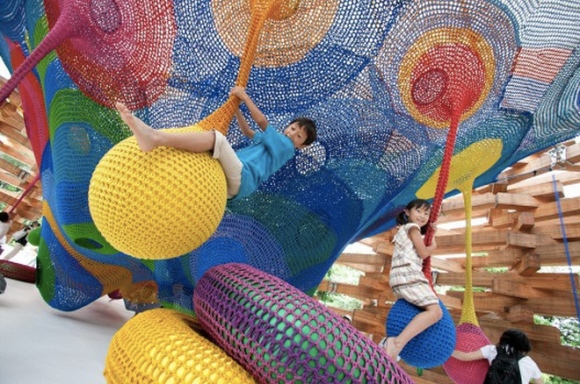
Last week, we had a round-up of my choices for the seven stupidest art pieces in Tokyo, but lest you think I am just a negative Nelly incapable of appreciating talent and beauty, this week we’re presenting Tokyo’s seven coolest public art pieces.
Again, let me start with the standard disclaimer about the subjectivity of art, the changeability of generational, societal and personal preferences, yada yada yada. Now here are my choices:
Steampunk Clock by Hayao Miyazaki
Anime fans will like this one. Did you know that the Nippon Television building in Shiodome is home to the world’s largest animated clock, designed by none other than Spirited Away and The Wind Rises creator Hayao Miyazaki? It springs into life five times a day, with a short mechanical show set to music. As you might imagine, this is hugely popular with children, and quite a lot of adults as well.
Sure, this is a pop culture-influenced piece that doesn’t have the gravitas of, say, Prague’s astronomical clock, but it does have all the earmarks of a successful public art piece: it’s beautiful, it’s functional, and it both enriches and draws inspiration from the surrounding community.
Senaka Awase no Maru by Felice Varini
Swiss artist Felice Varini has a knack for messing with your mind. He uses a projector and stencil to make geometric images that pop out at you in depth-perception-defying ways if you are standing in just the right position. Like the whispering gallery in Grand Central Station, his work creates a kind of Easter egg for those in the know about a city. So next time you are in Tachikawa, impress your friends by knowing just where to stand to make the seemingly random black lines on the overpass and stairs turn into a giant, floating circle.
Fossils of 20th Century Civilization by Shoichiro Higuchi
One place where Tokyo really excels at public art is in the train and subway stations, in particular the Toei lines. That company has turned entire stations into art projects! But possibly one of the neatest pieces can be found stretching the entire length of a platform at Kiyosumi-Shirakawa Station. The artist has used all kinds of industrial metal relics, like nails, chain links, and gears, to create a giant mural with lovely geometric patterns. Each time you look at it, you notice something new, and unlike a lot of station art placed in walkways, the location of this one ensures you have plenty of time to consider it.
Figure of Underground Railroad by Akira Yamaguchi
Subway walkways can be kind of dark and sterile places, but some smart person at Nishi-Waseda Station realized that backlighting a stained glass artwork would give the illusion of sunlight underground and it changed the whole atmosphere of the station. Waseda is well-known for its wealth of educational institutions, including the prestigious Waseda University, and the piece makes reference to the intellectual life of the neighborhood in the details, showing elementary school kids in their uniforms, heads together over some bit of homework, college-age youths waiting for the train with musical instruments strapped to their backs, and professor types hurrying down the stairs. There’s also an interesting anachronistic quality to it, with some people wearing Showa-era clothes and others clearly talking on cell phones.
Myth of Tomorrow by Taro Okamoto
OK, one more piece of station art. Anyone who has been to the youth culture hub of Shibuya will probably recognize this huge mural near the entrance to the Inokashira Line. It’s by Japanese avant-garde darling Taro Okamoto, in his signature abstract style and primary colors. The painting mainly depicts the bombings of Hiroshima and Nagasaki, but other small details that reference the dangers of nuclear technology are included, such as the Fukuryu-maru 5, a fishing boat whose crew and cargo were unknowingly subjected to massive doses of radiation from nuclear tests in the Bikini Atoll. It is so representative of the anti-nuclear movement that a Tokyo art collective secretly added a panel depicting the crippled Fukushima Dai-ichi reactors in 2011.
Duality by ART+COM
The very best public art fits seamlessly into the surroundings, serving a functional purpose while also providing an artistic experience for those that stop to enjoy it. An excellent recent example is a piece in Shinagawa that unobtrusively uses LED screens and weight sensors to make an interactive artwork out of a simple walkway to the station. The glass tiles over the LED screens are equipped with load cells measuring the exact position and power of each footstep, triggering corresponding virtual waves on the screens that continue as actual waves in the adjacent pond. It’s an entrancing synthesis of the virtual and actual worlds with you as the nexus, or—if you are late for your train—it’s not a big statue getting in your way.
Showa Rainbow Hammock by Toshiko Horiuchi MacAdam
Artist Toshiko Horiuchi MacAdam creates sprawling, hand-knit, rainbow-colored creations that are meant to be crawled over, hung from and bounced off in a very hands-on style of art appreciation. The story goes that MacAdam had a gallery show once where a child asked if it was OK to touch her work. Rather than trying to protect it from little hands, she encouraged him to climb all over it. Since then, she has been working with a Japanese structural engineer to create fun and safe installations for kids to enjoy. The picture above is from Tokyo’s Showa Kinen Park, but I confess my favorite work of hers, shown at the top of this article, is actually just outside of Tokyo at the Hakone Open Air Museum. Look at that beautiful crazy yarn playland and tell me your inner child isn’t itching to try it out.
OK, readers, those are my choices. How about yours? Got a favorite piece in Tokyo or your hometown? Tell us in the comments!
Source: RocketNews24
Images: NetPlayWorks (top), Afar (clock), @ART, ART+COM (Duality), Sugusugu (hammock)

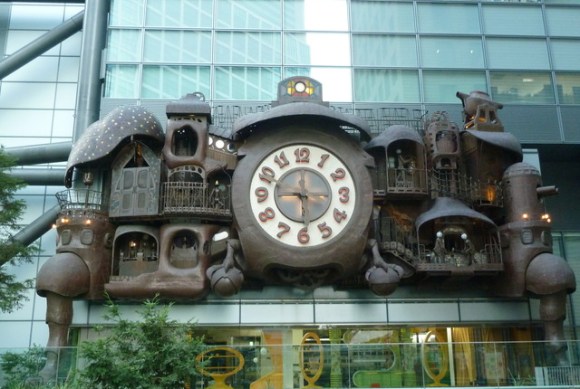
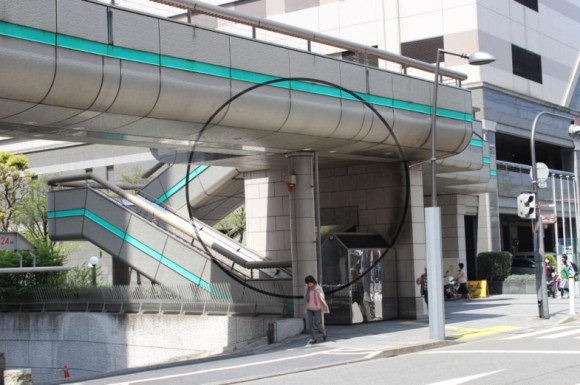
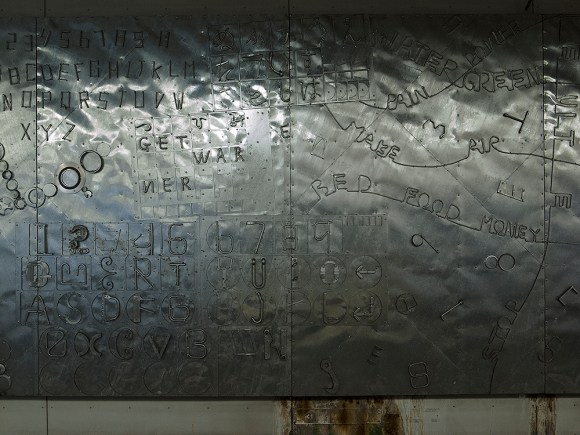
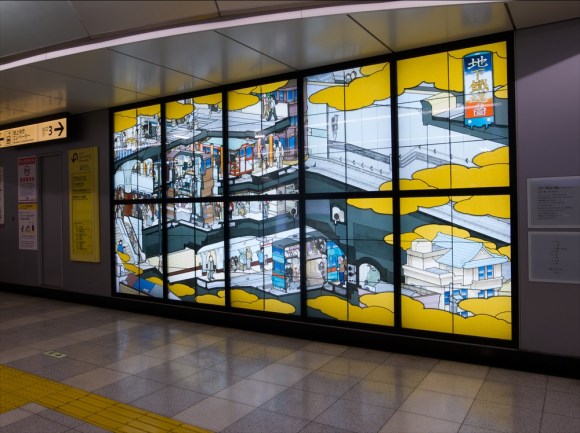
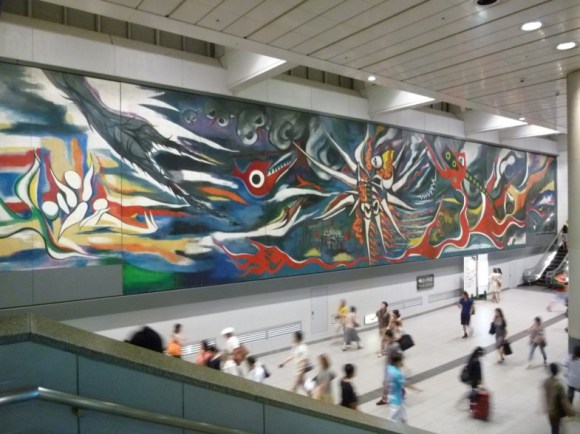
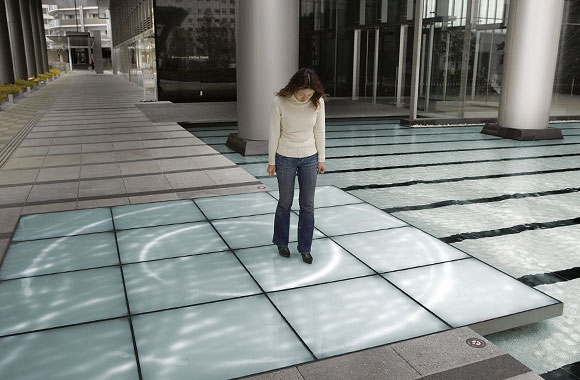
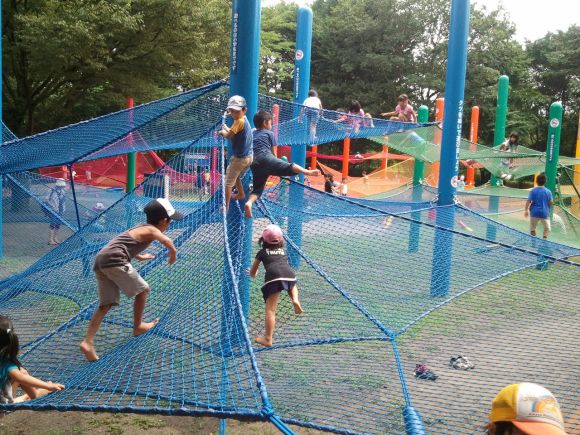
 Japan’s amazing Excel artist wishes everyone a happy new year using the spreadsheet program
Japan’s amazing Excel artist wishes everyone a happy new year using the spreadsheet program Akira’s Katsuhiro Otomo to design giant mural featuring cyborg fish for Tohoku’s Sendai Airport
Akira’s Katsuhiro Otomo to design giant mural featuring cyborg fish for Tohoku’s Sendai Airport Tokyo art gallery encourages visitors to steal its art
Tokyo art gallery encourages visitors to steal its art Tokyo Metro adds platform display showing where least crowded parts of the next train will be
Tokyo Metro adds platform display showing where least crowded parts of the next train will be Hello, cosmetics! Clinique teams up with Hello Kitty this summer for first-time collaboration
Hello, cosmetics! Clinique teams up with Hello Kitty this summer for first-time collaboration How to order snacks on a Shinkansen bullet train in Japan
How to order snacks on a Shinkansen bullet train in Japan Burger King Japan suddenly adds Dr. Pepper and Dr. Pepper floats to its menu nationwide
Burger King Japan suddenly adds Dr. Pepper and Dr. Pepper floats to its menu nationwide Japan’s new difficult-to-drink-from beer glass protects your liver, but it’s a brutal experience
Japan’s new difficult-to-drink-from beer glass protects your liver, but it’s a brutal experience New samurai glasses are Japan’s latest weird must-have souvenir
New samurai glasses are Japan’s latest weird must-have souvenir Studio Ghibli releases Ponyo donburi bowl to bring anime ramen to life
Studio Ghibli releases Ponyo donburi bowl to bring anime ramen to life New Nintendo Lego kit is a beautiful piece of moving pixel art of Mario and Yoshi【Photos】
New Nintendo Lego kit is a beautiful piece of moving pixel art of Mario and Yoshi【Photos】 Nintendo history you can feel – Super NES, N64, and GameCube controllers become capsule toys
Nintendo history you can feel – Super NES, N64, and GameCube controllers become capsule toys Demon Slayer: Kimetsu no Yaiba gets new roller coaster attractions and food at Universal Studios Japan
Demon Slayer: Kimetsu no Yaiba gets new roller coaster attractions and food at Universal Studios Japan High-fashion Totoro cuddle purse is like an elegant stroll in the forest【Photos】
High-fashion Totoro cuddle purse is like an elegant stroll in the forest【Photos】 “The most Delicious Cup Noodle in history” – Japan’s French Cup Noodle wins our heart【Taste test】
“The most Delicious Cup Noodle in history” – Japan’s French Cup Noodle wins our heart【Taste test】 Starbucks releases a cute Frappuccino and Unicorn Cake…but not in Japan
Starbucks releases a cute Frappuccino and Unicorn Cake…but not in Japan Kyoto Tower mascot termination reveals dark side behind cute Japanese characters
Kyoto Tower mascot termination reveals dark side behind cute Japanese characters McDonald’s Japan’s Soft Twist Tower: A phantom ice cream only sold at select branches
McDonald’s Japan’s Soft Twist Tower: A phantom ice cream only sold at select branches Yabai Ramen: What makes this Japanese ramen so dangerous?
Yabai Ramen: What makes this Japanese ramen so dangerous? Finally! Nintendo Japan expands Switch 8-bit controller sales to everybody, Online member or not
Finally! Nintendo Japan expands Switch 8-bit controller sales to everybody, Online member or not Japanese government wants to build luxury resorts in all national parks for foreign tourists
Japanese government wants to build luxury resorts in all national parks for foreign tourists To combat declining birth rate, Japan to begin offering “Breeding Visas” to foreigners
To combat declining birth rate, Japan to begin offering “Breeding Visas” to foreigners 10 things you should buy at 7-Eleven in Japan
10 things you should buy at 7-Eleven in Japan Studio Ghibli releases anime heroine cosplay dresses that are super comfy to wear
Studio Ghibli releases anime heroine cosplay dresses that are super comfy to wear Woman charged for driving suitcase without a license in Osaka
Woman charged for driving suitcase without a license in Osaka Studio Ghibli unveils My Neighbour Totoro miniature house model
Studio Ghibli unveils My Neighbour Totoro miniature house model Kyoto experiencing problems with foreign tourists not paying for bus fares, but not on purpose
Kyoto experiencing problems with foreign tourists not paying for bus fares, but not on purpose Fighting mild hunger with a Japanese soda that turns into jelly in the stomach【Taste test】
Fighting mild hunger with a Japanese soda that turns into jelly in the stomach【Taste test】 Studio Ghibli’s Howl’s Moving Castle tapestry unveiled in Japan for first time
Studio Ghibli’s Howl’s Moving Castle tapestry unveiled in Japan for first time McDonald’s new Happy Meals offer up cute and practical Sanrio lifestyle goods
McDonald’s new Happy Meals offer up cute and practical Sanrio lifestyle goods Sales of Japan’s most convenient train ticket/shopping payment cards suspended indefinitely
Sales of Japan’s most convenient train ticket/shopping payment cards suspended indefinitely Sold-out Studio Ghibli desktop humidifiers are back so Totoro can help you through the dry season
Sold-out Studio Ghibli desktop humidifiers are back so Totoro can help you through the dry season Japanese government to make first change to romanization spelling rules since the 1950s
Japanese government to make first change to romanization spelling rules since the 1950s Foreigner’s request for help in Tokyo makes us sad for the state of society
Foreigner’s request for help in Tokyo makes us sad for the state of society Ghibli founders Toshio Suzuki and Hayao Miyazaki contribute to Japanese whisky Totoro label design
Ghibli founders Toshio Suzuki and Hayao Miyazaki contribute to Japanese whisky Totoro label design Doraemon found buried at sea as scene from 1993 anime becomes real life【Photos】
Doraemon found buried at sea as scene from 1993 anime becomes real life【Photos】 Tokyo’s most famous Starbucks is closed
Tokyo’s most famous Starbucks is closed Princesses, fruits, and blacksmiths: Study reveals the 30 most unusual family names in Japan
Princesses, fruits, and blacksmiths: Study reveals the 30 most unusual family names in Japan Giant 100-meter-long Super Mario mural is coming to Kyoto
Giant 100-meter-long Super Mario mural is coming to Kyoto Studio Ghibli and Tokyo Metro team up for summer stamp rally with adorable Catbus prize
Studio Ghibli and Tokyo Metro team up for summer stamp rally with adorable Catbus prize Three great indoor date spots (plus a bonus!) in Tokyo, for when the weather just won’t cooperate
Three great indoor date spots (plus a bonus!) in Tokyo, for when the weather just won’t cooperate Massive manga mural takes over Tokyo station to celebrate Jujutsu Kaisen【Photos】
Massive manga mural takes over Tokyo station to celebrate Jujutsu Kaisen【Photos】 Tokyo Revengers anime/manga takes over Tokyo Station with dozens of character posters【Photos】
Tokyo Revengers anime/manga takes over Tokyo Station with dozens of character posters【Photos】 Gotta draw ‘em all! New 3DS game teaches players how to draw over 100 different Pokémon
Gotta draw ‘em all! New 3DS game teaches players how to draw over 100 different Pokémon South Korean design company turns subway maps into beautiful artwork you can hang on your wall
South Korean design company turns subway maps into beautiful artwork you can hang on your wall Giant Final Fantasy XVI painting station artwork, 3-D video billboard fight appear in Japan【Vid】
Giant Final Fantasy XVI painting station artwork, 3-D video billboard fight appear in Japan【Vid】 Press start, receive art: Japanese art gallery showcases bugged Nintendo screen canvases
Press start, receive art: Japanese art gallery showcases bugged Nintendo screen canvases The secret piece of information hiding in plain sight on Tokyo’s subway signs
The secret piece of information hiding in plain sight on Tokyo’s subway signs Exhibit of goldfish art by Riusuke Fukahori takes our breath away!【Pics】
Exhibit of goldfish art by Riusuke Fukahori takes our breath away!【Pics】 Incredible PowerPoint recreation of Tokyo Station features over 2,000 digital objects
Incredible PowerPoint recreation of Tokyo Station features over 2,000 digital objects Cosplay, art, and power-ups: A look at the Dragon Ball 30th anniversary gallery in Little Tokyo
Cosplay, art, and power-ups: A look at the Dragon Ball 30th anniversary gallery in Little Tokyo Tokyo train stations to host Super Mario box/character art displays to celebrate 35th anniversary
Tokyo train stations to host Super Mario box/character art displays to celebrate 35th anniversary
Leave a Reply